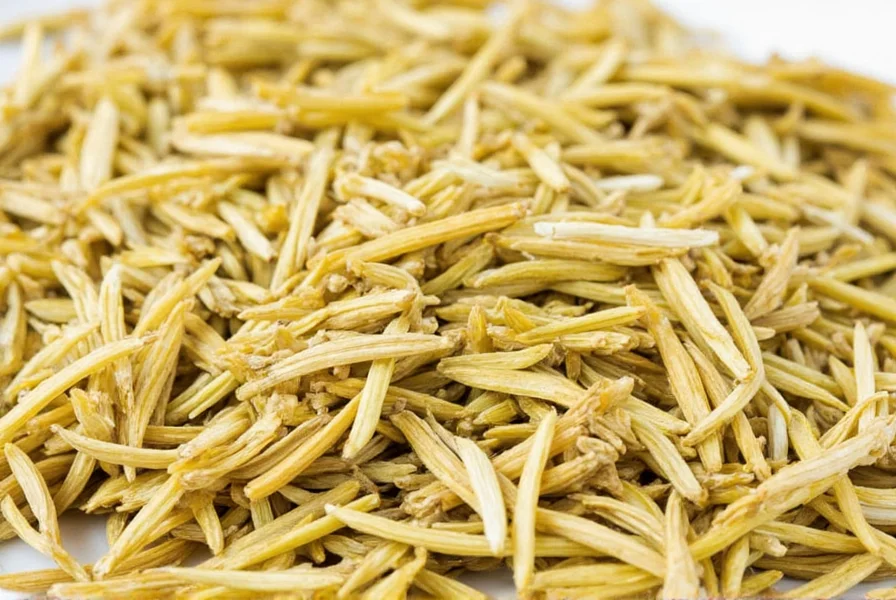Table of Contents
Introduction to Dried Lemongrass
Dried lemongrass is a concentrated, shelf-stable form of the tropical herb widely used in Southeast Asian cuisine. Unlike fresh lemongrass which requires immediate use, dried lemongrass delivers intense citrusy flavor to soups, teas, and marinades with minimal preparation. This guide explains exactly how to use it effectively in everyday cooking.
How to Use Dried Lemongrass
Dried lemongrass works best in liquid-based dishes where its flavor fully infuses. Here's how to maximize its potential:
- For soups and broths: Add 1-2 whole stalks to simmering liquid for 15-20 minutes. Remove before serving.
- For tea: Steep 1 teaspoon of crushed dried lemongrass in 8oz hot water (195°F) for 5-7 minutes. Add honey or ginger for extra flavor.
- For marinades: Mix 1 teaspoon ground dried lemongrass with oil, soy sauce, and garlic for chicken or fish.
- For rice dishes: Add 1/2 teaspoon ground lemongrass to cooking water for aromatic jasmine rice.
- For spice blends: Combine with chili, coriander, and turmeric for authentic Thai curry powder.
Pro tip: Always crush dried lemongrass stalks before use to release maximum flavor. For powder, use a spice grinder for consistent texture.

Fresh vs. Dried Lemongrass Comparison
| Factor | Fresh Lemongrass | Dried Lemongrass |
|---|---|---|
| Flavor Profile | Bright, grassy, mild citrus | Intense, concentrated, earthy-citrus |
| Best Applications | Salads, stir-fries, garnishes | Soups, broths, teas, marinades |
| Preparation Time | 10-15 minutes (washing, chopping) | Ready to use (no prep needed) |
| Shelf Life | 7 days refrigerated | 1-2 years airtight storage |
| Flavor Intensity | Moderate (requires larger quantities) | High (1 tsp dried = 1 stalk fresh) |
Proper Storage Tips
Maximize shelf life and flavor retention with these storage methods:
- Airtight container: Store in glass jars or food-grade plastic containers with tight seals
- Cool, dark place: Keep away from sunlight and heat sources (pantry ideal)
- Freezer option: For long-term storage (2+ years), freeze in vacuum-sealed bags
- Avoid moisture: Never store in humid environments or near spices with strong odors
Always check aroma before use - fresh dried lemongrass should smell distinctly citrusy, not musty or stale.
Frequently Asked Questions
Can I substitute dried lemongrass for fresh in recipes?
Yes, but adjust quantities: 1 teaspoon dried lemongrass equals 1 fresh stalk (3 inches long). Dried works best in liquid-based dishes where it can rehydrate. For dry applications like rubs, use powdered form and reduce quantity by 25%.
How do I rehydrate dried lemongrass?
For soups or curries, add directly to cooking liquid - it rehydrates during simmering. For tea or infusions, soak in warm water for 10 minutes before steeping. Never boil dried lemongrass directly as high heat destroys delicate citrus compounds.
Why does my dried lemongrass taste bitter?
Bitterness usually comes from using too much or boiling it too long. Use only 1-2 stalks per quart of liquid, and remove before serving. For powdered form, start with 1/4 teaspoon per serving and adjust to taste.
What dishes work best with dried lemongrass?
Ideal for liquid-based dishes: Tom Yum soup, pho broth, Thai curries, herbal teas, and marinades. Avoid using in dry applications like baked goods or raw salads where texture matters. For garnishes, fresh lemongrass is superior.
How long does dried lemongrass last?
Properly stored in airtight containers away from light and moisture, dried lemongrass maintains peak flavor for 12-18 months. After 2 years, it may lose potency but remains safe to use. Always check aroma before use - stale lemongrass smells musty rather than citrusy.










 浙公网安备
33010002000092号
浙公网安备
33010002000092号 浙B2-20120091-4
浙B2-20120091-4